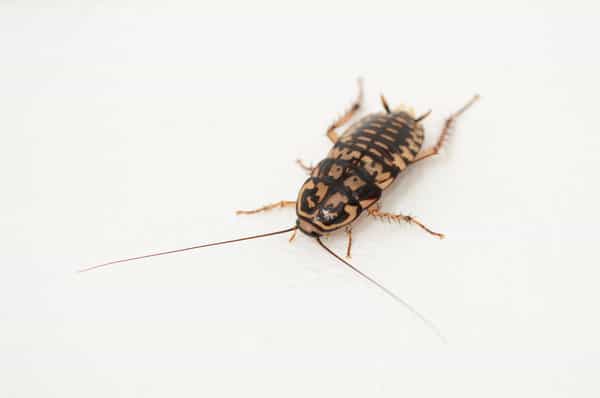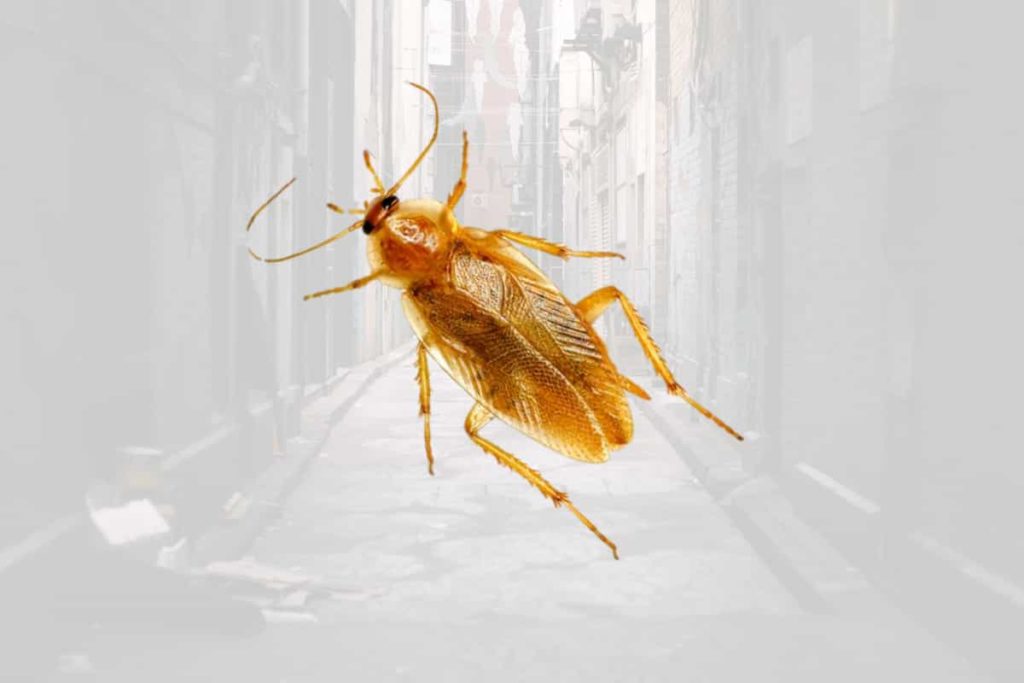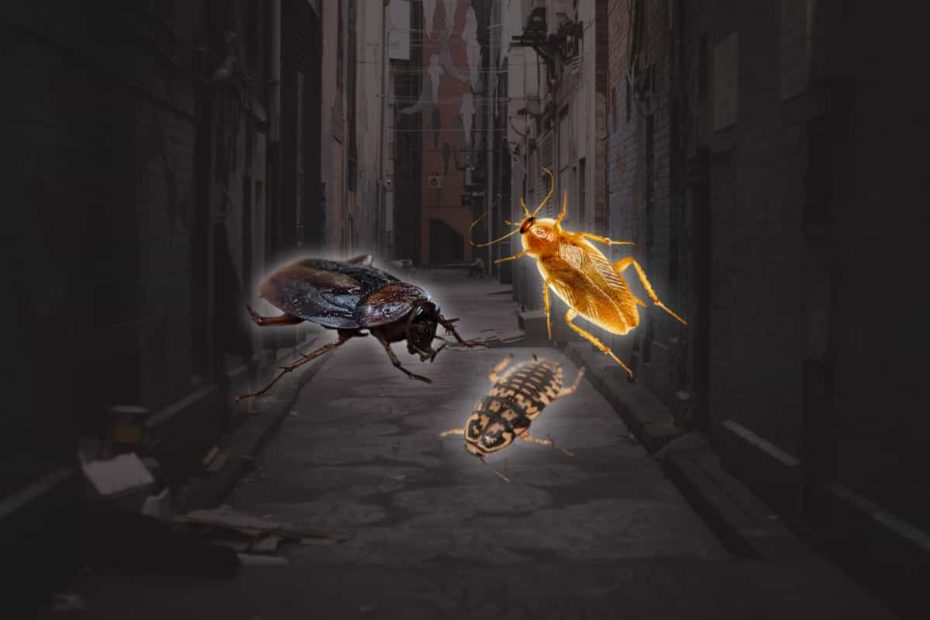Homeownership can have a lot of unforeseen problems, usually at the most inconvenient times. One of the main issues for any household is pests. From rodents and birds to spiders and insects, the last thing anyone needs in their home is unwanted guests.
One of the worst indoor pest is cockroaches. Hard to get rid of and always hiding, cockroaches are sneaky and hang around for quite some time. Where do cockroaches hide though, and how do you get rid of them?
First Identify the Type of Cockroach
There are three main types of cockroaches, the American cockroach, the German cockroach, and the Brown Banded cockroach. They all have different preferences in the environment they frequent in. The American and German cockroach prefer hot and humid areas while the Brown Banded cockroach is found in drier climates. It is important to identify a cockroach problem early as they are unclean insects. They carry diseases such as salmonella and gastroenteritis and can irritate asthma and allergies.

American Cockroach 
Brown Banded Cockroach 
German Cockroach
Where Do American Cockroaches Hide

The American cockroach is common in sewer systems, basements, and kitchens. They are characterized by a reddish-brown color and a yellow band surrounding the area behind their head. These cockroaches can fly when they reach adulthood. Females lay around 16 eggs at a time and will leave the egg sac in a hot, humid place. The American cockroach can reach adulthood in as little as five and a half months. They can live up to two and a half years.
Their diet consists of fungi and algae outdoors. Indoors, they will find scraps of food under appliances, in drains, and any food left out whether it be human or pet. While they prefer the climate of the basement or garage, they can be found foraging in kitchens and bathrooms. Drains and sewers are also typically full of them. The American cockroach is known to come indoors during colder weather. They cannot handle cold temperatures and thrive better in moist climates.
Recognizing the signs of the American cockroach include droppings, egg capsules, and the emission of odor. The odor is described as a musty smell and is from the pheromone that keeps the cockroaches in groups. In order to control the infestation of the roaches, insecticide is a common place to start. Also, by sealing any cracks in basements and fixing weather stripping that may be broken. Cleaning under appliances and cabinets and eliminating food sources is a preventative measure that will help stop the infestation of the American cockroach.
Where Do German Cockroaches Hide

The German cockroach lives in hot, humid areas usually above basement level. They are tan or light brown with two black horizontal stripes behind their head. While adults do have wings, they prefer to run. Infestation can happen fast, as females lay 40 eggs at a time. The German cockroach also matures rapidly, in as little as two months. They live about one and a half years.
Commonly, the German cockroach eats meats, starches, and sugars. They are a hearty breed of roach, turning to toothpaste, soap and if starved each other’s wings and legs as a food source. The roaches live in small, tight spaces, typically above ground, such as cracks in walls. In buildings, they live in drain pipes and electrical appliances which adds to their rapid spread. This makes it easy to miss them as they are very good at hiding.
Like the American cockroach, the German cockroach produces a musty-like odor. They can also be recognized by droppings and egg sacs in cabinets and under appliances. However, the German cockroach is much harder to get rid of. In restaurants, apartment buildings, and food processing plants, the German cockroach can be near impossible to stop. One of the main reasons is due to the adaptations of the roach making them resistant to sugar bait. Caulking cracks and crevices around drains and windows can help deter their entrance. If any signs of the German cockroach are detected, it is best to consult professional help as soon as possible.
Where Do Brown Banded Cockroaches Hide

The Brown Banded cockroach is found in warm, dry climates. They are one of the smallest cockroaches and are brown in color. The adults have light brown bands present on their wings while the young have the bands on their bodies. The Brown Banded cockroach usually lays eighteen eggs that hatch in about a month and a half. They usually live less than a year.
Known as the furniture cockroach, the Brown Banded cockroach has a wide variety of diet. They will eat anything from pantry crumbs or trash to curtains or wallpaper glue. Brown banded cockroaches prefer a different climate to the rest as they do not need moisture to thrive. They mainly live in living rooms and bedrooms. Used furniture and electronics are also where they can hide and enter new homes. This makes the Brown Banded cockroach hard to detect and easily spread.
The Brown Banded cockroach has a similar appearance to the German cockroach. It is key to identify the cockroach in order to start ridding. They are usually active at night but can be seen during the day scavenging for food. The roaches leave signs such as droppings and egg sacs. They are problematic to get rid of due to their wide variety diet. Brown Banded cockroaches can be seen flying around lights or will fly if disturbed. Certain baits can be used but if a Brown Banded cockroach infestation is likely, consult a pest specialist.
Treating a Cockroach Infestation
You most probably have an infestation if you constantly notice cockroaches appearing throughout the day and night. Other signs include seeing cockroach droppings, wings and their egg casings. If you believe that there is an infestation, it is important to treat it because of the health diseases that they possible carry.
For serious infestations, call your pest care professionals as they are the ones who are the most efficient and know the best methods to solving your infestation problem. These pest control professionals have the right tools and equipments for the job, and they know all the tell-tale signs when it comes to cockroach infestations.
Recommended DIY Pest Control Products
If you think that the issue is only a minor one, try some of the available pest control products on the market first. Some of these products actually work remarkably well for minor cases.
Glue-based cockroach traps are fairly effective in rounding up and trapping cockroaches. The mechanism is very simple. Bait will be placed in the middle of the trap, with very sticky glue surrounding it. You will very likely be able to find trapped cockroaches within 24-48 hours of placing the trap. These traps last for up to 3 months, but I recommend to swap them out every few weeks until you find no more cockroaches around.
Although it will tend to be a little messier (dead cockroaches lying around), cockroach gel baits are another effective solution to your infestation. I recommend the Advion Cockroach Gel Bait is they have proven to work with serious infestations time after time through reviews and testimonials of thousands of people.
Use Them Carefully Around Pets
Some insecticides can be hazardous to pets. Almost all aerosol sprays pose a threat to dogs and cats. They can cause minor irritation such as nausea and drooling but can also lead to vomiting and diarrhea in serious cases especially if inhaled or consumed.
If there are pets in the home, it is important to read the labels on insecticides and roach traps. There are many pet friendly treatments for cockroaches on the market. It is still a good option to keep the pets away from the treated area as much as can be. Keep bait traps out of reach of pets such as in cabinets or on shelves.
Preventive Measures
The American, German, and Brown Banded roaches can indeed cause havoc in any household environment. Each poses a threat no matter the climate. The American and German cockroaches love humidity while the Brown Banded loves dry, warm places. Cockroaches carry disease and can even cause problems such as asthma or allergies. Always keep your house clean and tidy, fix any leaking taps or water supply, and never leave food lying around overnight.
As in any infestation, early detection is key for the control and removal of the roaches. Although over the counter traps and poisons may help, a pest control specialist is the best option in stopping the roaches if your problem is recurring.
